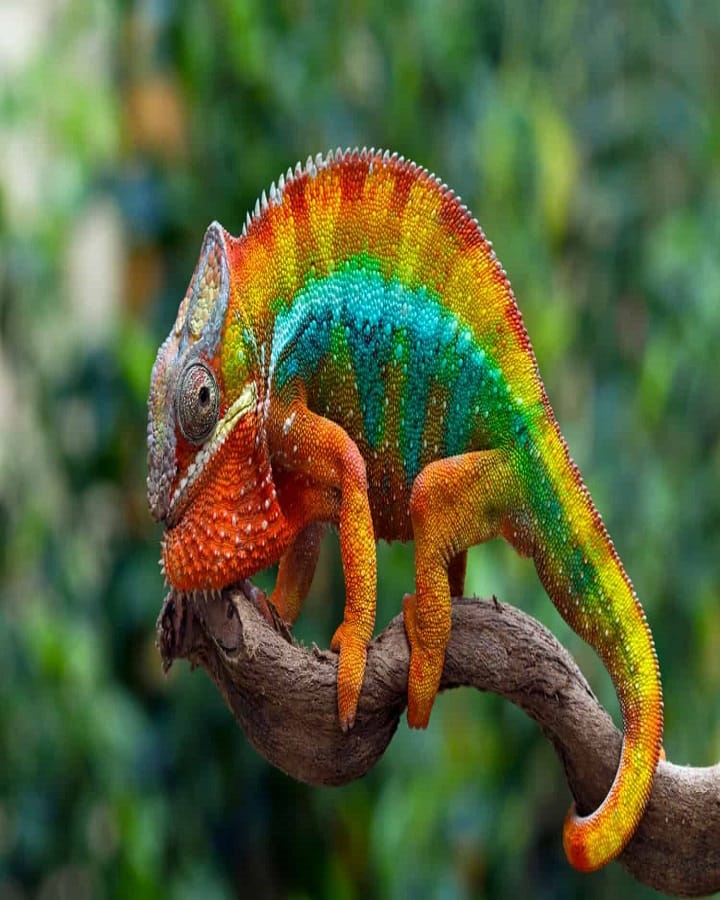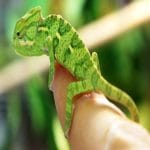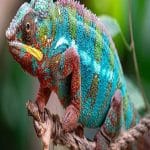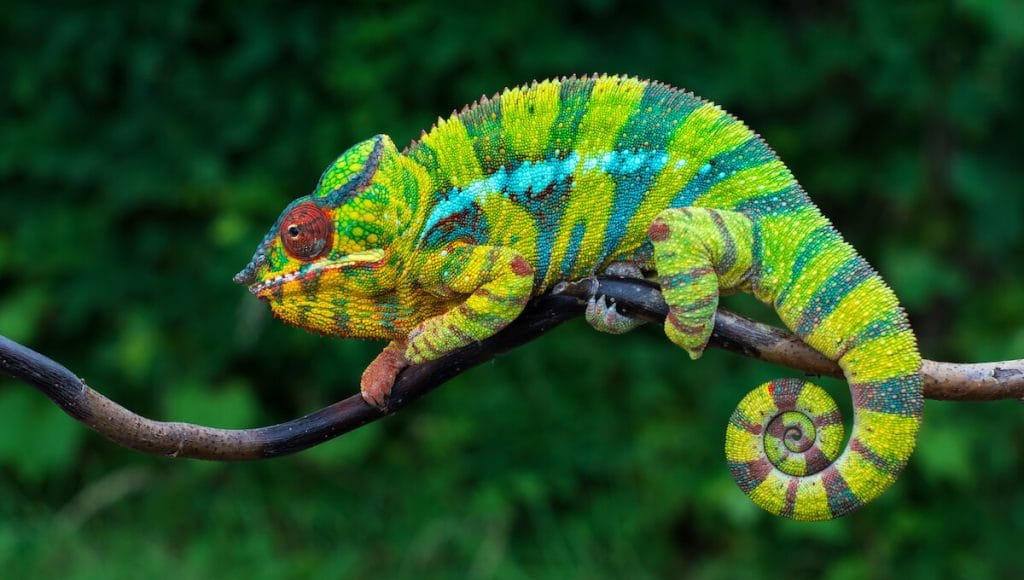
Image Credit: Hema
When it comes to exotic reptiles, few creatures capture attention like the panther chameleon eye. Native to Madagascar, this colorful reptile is admired for its ability to change colors and its striking beauty. But beyond its vibrant appearance, one of the most fascinating features of the panther chameleon is its eyes. Unlike any other animal on earth, their eyes offer a combination of movement, precision, and vision that makes them true marvels of evolution.
Panther Chameleon Eyes: Nature’s Fascinating Vision System
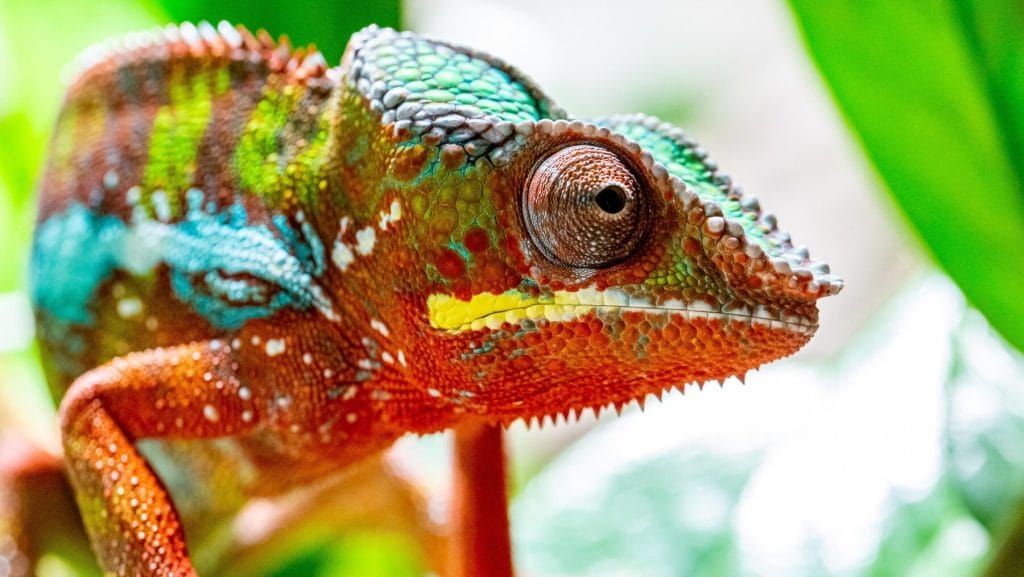
Unique Eye Structure
A panther chameleon eyes are unlike those of humans or most other animals. Instead of being fully exposed, their eyes are covered by a cone-shaped eyelid, leaving only a small opening for the pupil. This gives them a distinct, turret-like appearance. The protective covering not only shields the eye but also allows for remarkable mobility and focus.
Each eye is mounted on a cone, and unlike us, they don’t move in sync. This specialized design gives the panther chameleon an extraordinary advantage in its environment, particularly when hunting or avoiding predators.
Independent Movement
One of the most amazing facts about panther chameleons is that their eyes can move independently of one another. While one eye looks forward, the other can look backward, upward, or downward. This means a single chameleon can scan nearly 360 degrees around its body without moving its head.
This independence of movement serves two critical purposes:
- Predator awareness – A chameleon can keep an eye on approaching danger while still focusing on finding food.
- Hunting efficiency – While scanning with one eye, the other can lock onto an insect, preparing for the strike.
It’s like having two separate cameras that send different live feeds to the brain—an incredible evolutionary adaptation for survival.
Depth Perception and Binocular Vision
Although each eye can move independently, panther chameleons can also coordinate both eyes when needed. When they spot prey, both eyes quickly focus on the same target, giving them binocular vision. This allows them to judge distance with astonishing accuracy.
This depth perception is crucial because the chameleon relies on its long, sticky tongue to catch insects. A miscalculation could mean missing a meal, but thanks to their precise eyesight, panther chameleons rarely fail when striking.
Extraordinary Vision Capabilities
Panther chameleons don’t just move their eyes in unique ways—they also see the world differently than we do. Their vision is highly developed, with the ability to detect:
- Ultraviolet light – Unlike humans, chameleons can see UV rays. This enhances their ability to navigate their environment, find mates, and even detect subtle differences in coloration.
- Sharp focus – Their eyesight is so sharp that they can spot small insects several feet away, even when those insects are camouflaged.
- Full range scanning – Their rotating, turret-like eyes give them a panoramic field of view, allowing them to monitor nearly everything around them simultaneously.
This advanced vision system plays a big role in their survival and success as hunters.
Role of Eyes in Color Change
Although color change in chameleons is primarily linked to communication, temperature regulation, and camouflage, their eyes also play a part. By closely observing their surroundings, panther chameleons adjust their colors for blending in, attracting mates, or warning off rivals. The eyes act as the sensory tool that guides these color decisions, making vision central to their unique ability.
Adaptations for Survival
In the dense forests of Madagascar, having such a specialized vision system gives the panther chameleon a clear edge. With predators like birds and snakes lurking nearby, the ability to see almost everything around them without moving their bodies makes them harder to detect. And when it comes to food, their sharp, coordinated eyesight ensures that they can strike insects with lightning-fast precision.
panther chameleon eyes are more than just fascinating to look at—they are extraordinary tools of survival. With their turret-like structure, independent movement, ultraviolet vision, and precise depth perception, these eyes represent one of nature’s most unique designs. They not only help the chameleon hunt and avoid predators but also allow it to thrive in its natural habitat.
Next time you admire the dazzling colors of a panther chameleon, take a moment to appreciate its incredible eyes—the true hidden superpower behind this remarkable reptile.
Frequently Asked Questions
What makes panther chameleon eyes unique?
Panther chameleon eyes can move independently, giving them a nearly 360-degree view. They can also focus both eyes together for precise depth perception when hunting.
Can panther chameleons see ultraviolet light?
Yes, panther chameleons can detect ultraviolet (UV) light, which helps them find mates, navigate their surroundings, and spot subtle changes in coloration.
Why are panther chameleon eyes important for survival?
Their specialized eyes allow them to detect predators, scan their environment, and target prey with incredible accuracy, making them essential for both defense and hunting.

